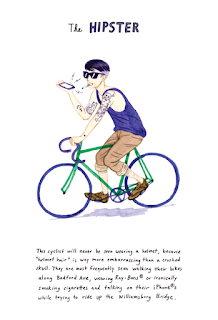Historian Laurel Thatcher Ulrich has written, "Well-behaved women seldom make history".
She, of course, is correct. However, when women are entering previously-unchartered territory, we sometimes have to behave in accordance with accepted gender norms in order to hold onto our places in those worlds. In other words, we can't be perceived as a threat to men. On the other hand, we also have to do whatever we're doing in our own way--and, indeed, we often have to figure out what that way is--in order not to be seen as inferior to the men who are doing whatever it is we're doing.
I know from whence I speak: In my transition from living as a man to my life as a woman, I have been criticized for being too much like a man and too much like a woman--sometimes by the very same people. The same people who told me I was too aggressive on the job told me, in the next breath, that I was too submissive--"like a woman." It's a bit like telling a woman she throws too hard for a girl but that she "throws like a girl".
I thought about that when I came across this list of "don'ts" for female cyclists that was published in the New York World in 1895:
Don’t be a fright.
Don’t faint on the road.
Don’t wear a man’s cap.
Don’t wear tight garters.
Don’t forget your toolbag
Don’t attempt a “century.”
Don’t coast. It is dangerous.
Don’t boast of your long rides.
Don’t criticize people’s “legs.”
Don’t wear loud hued leggings.
Don’t cultivate a “bicycle face.”
Don’t refuse assistance up a hill.
Don’t wear clothes that don’t fit.
Don’t neglect a “light’s out” cry.
Don’t wear jewelry while on a tour.
Don’t race. Leave that to the scorchers.
Don’t wear laced boots. They are tiresome.
Don’t imagine everybody is looking at you.
Don’t go to church in your bicycle costume.
Don’t wear a garden party hat with bloomers.
Don’t contest the right of way with cable cars.
Don’t chew gum. Exercise your jaws in private.
Don’t wear white kid gloves. Silk is the thing.
Don’t ask, “What do you think of my bloomers?”
Don’t use bicycle slang. Leave that to the boys.
Don’t go out after dark without a male escort.
Don’t go without a needle, thread and thimble.
Don’t try to have every article of your attire “match.”
Don’t let your golden hair be hanging down your back.
Don’t allow dear little Fido to accompany you
Don’t scratch a match on the seat of your bloomers.
Don’t discuss bloomers with every man you know.
Don’t appear in public until you have learned to ride well.
Don’t overdo things. Let cycling be a recreation, not a labor.
Don’t ignore the laws of the road because you are a woman.
Don’t try to ride in your brother’s clothes “to see how it feels.”
Don’t scream if you meet a cow. If she sees you first, she will run.
Don’t cultivate everything that is up to date because yon ride a wheel.
Don’t emulate your brother’s attitude if he rides parallel with the ground.
Don’t undertake a long ride if you are not confident of performing it easily.
Don’t appear to be up on “records” and “record smashing.” That is sporty.
Some of these "don'ts" made me cringe. But I had to get a laugh out of "Don't try to ride in your brother's clothes 'to see how it feels'!"
She, of course, is correct. However, when women are entering previously-unchartered territory, we sometimes have to behave in accordance with accepted gender norms in order to hold onto our places in those worlds. In other words, we can't be perceived as a threat to men. On the other hand, we also have to do whatever we're doing in our own way--and, indeed, we often have to figure out what that way is--in order not to be seen as inferior to the men who are doing whatever it is we're doing.
I know from whence I speak: In my transition from living as a man to my life as a woman, I have been criticized for being too much like a man and too much like a woman--sometimes by the very same people. The same people who told me I was too aggressive on the job told me, in the next breath, that I was too submissive--"like a woman." It's a bit like telling a woman she throws too hard for a girl but that she "throws like a girl".
I thought about that when I came across this list of "don'ts" for female cyclists that was published in the New York World in 1895:
Some of these "don'ts" made me cringe. But I had to get a laugh out of "Don't try to ride in your brother's clothes 'to see how it feels'!"






